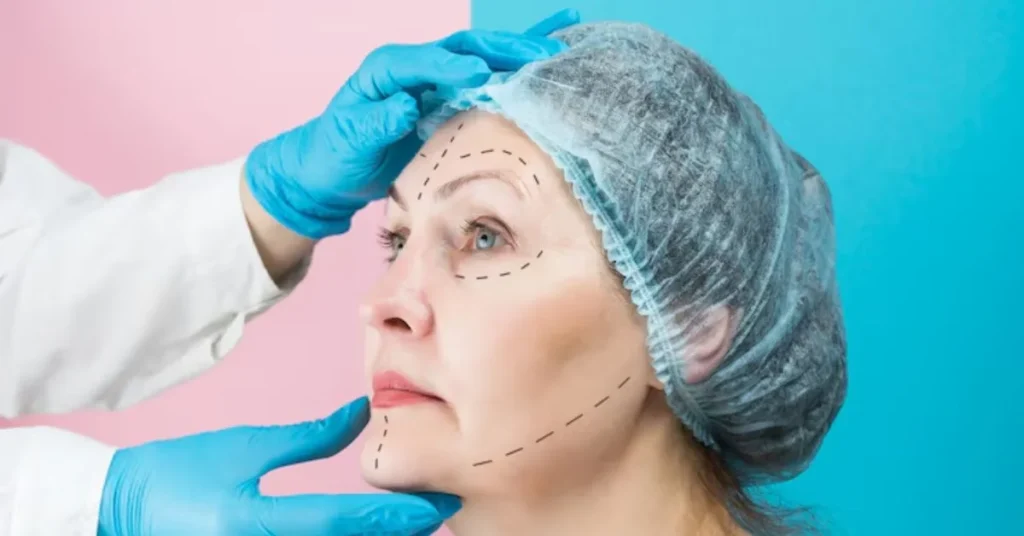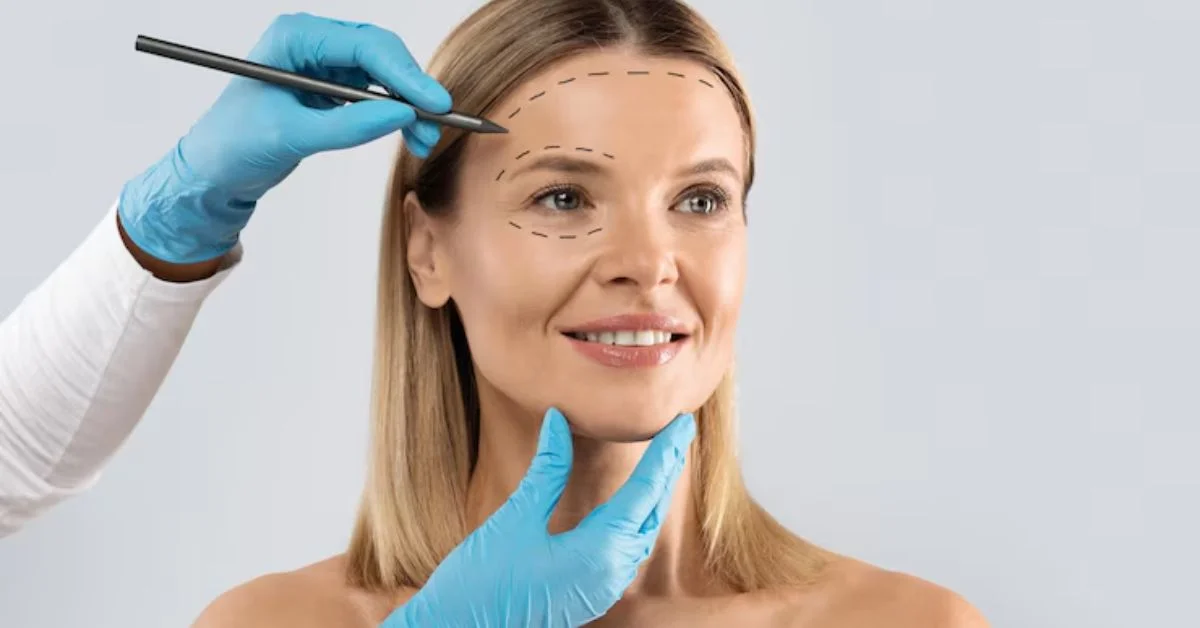In recent years, the conversation around facial aesthetics has become more nuanced, inclusive, and open, especially as more individuals seek harmony and balance in their facial features rather than conforming to a single beauty ideal. Among the procedures gaining attention for its subtle yet transformative results is lowering forehead surgery, also known as hairline lowering surgery or forehead reduction surgery.
For individuals with a high hairline or an elongated forehead, this surgery offers a solution that’s both cosmetic and psychological. Whether driven by personal confidence, cultural standards, or a desire for facial symmetry, the decision to undergo this procedure is deeply individual. This article explores lowering forehead surgery in detail—from what it entails, who it’s for, how it’s performed, what recovery looks like, and how to set expectations for results.
If you’re considering this surgery or simply curious, here’s everything you need to know, written in a factual, informative style that prioritizes clarity over hype.
What Is Lowering Forehead Surgery?
Lowering forehead surgery, or hairline advancement surgery, is a cosmetic surgical procedure designed to reduce the height of the forehead by moving the hairline forward. This is achieved by removing a strip of skin at the top of the forehead, then repositioning the scalp closer to the brow. The result is a lowered hairline and a shorter forehead, which can significantly alter facial proportions in a harmonious way.
This surgery is commonly performed for:
- Individuals with a genetically high hairline
- Patients who have experienced hairline recession
- Transgender women seeking facial feminization
- People who feel their forehead dominates their facial features
Understanding Forehead Proportions: Why It Matters
Facial aesthetics are often defined by balance. According to the golden ratio of facial beauty, the face is ideally divided into three equal horizontal sections:
- Hairline to brow
- Brow to base of nose
- Base of nose to chin
When the forehead occupies more than a third, it can visually lengthen the face and draw attention away from the eyes, nose, and mouth. For some, this imbalance is a source of discomfort or insecurity.
Lowering the hairline not only repositions the top boundary of the face but can also:
- Enhance facial symmetry
- Emphasize eye expression
- Balance out chin and jaw proportions
- Improve confidence in both everyday appearance and photographs
Candidacy: Who Can Get Hairline Lowering Surgery?
While many seek the benefits of this procedure, not everyone is a suitable candidate. Here’s what makes someone eligible—or not—for lowering forehead surgery.
Good Candidates:
- Have a high hairline (5.5 cm or more from brow to hairline)
- Possess adequate scalp laxity (the scalp must stretch enough to move forward)
- Are in good overall health
- Have realistic expectations
- May be combining this with brow lift or facial feminization surgery (FFS)
Caution or Contraindicated:
- History of scalp conditions (e.g., psoriasis, poor wound healing)
- Tight scalp skin (common after prior surgeries or radiation)
- Hair loss or thinning, especially in the frontal area
- Smokers, unless they commit to quitting before and after surgery
- Unrealistic expectations regarding scar visibility or hair growth
A qualified facial plastic surgeon or craniofacial specialist will assess these factors through physical examination, scalp measurement, and medical history review.

The Procedure: Step-by-Step Surgical Overview
Hairline lowering surgery is typically performed under local anesthesia with sedation or general anesthesia, depending on the patient’s preference and complexity of the case. The surgery generally lasts 2 to 3 hours.
Step 1: Planning and Marking
The surgeon carefully measures the forehead and marks both the current and desired hairline. A wavy incision is usually designed to mimic the natural hairline, which helps camouflage the eventual scar.
Step 2: Incision and Skin Removal
An incision is made along the marked hairline, and a strip of forehead skin is removed—typically 1.5 to 3 cm, depending on scalp laxity and patient goals.
Step 3: Scalp Advancement
The scalp is carefully lifted and advanced forward to meet the new lower hairline. In some cases, small tension-reducing devices (called endotines) are temporarily placed to hold the scalp in position during healing.
Step 4: Closure
The incision is closed in layers with fine sutures, minimizing scar tension. Hair follicles along the incision edge are preserved as much as possible, and in some cases, hair grafting is done later to further disguise the scar.
Recovery Timeline: What to Expect After Surgery
First Week:
- Swelling and bruising along the forehead and eyes
- Mild to moderate discomfort, managed with medication
- Sutures may be visible; removed at day 7–10
- Avoid strenuous activity and facial expressions that stress the incision
Week 2–4:
- Swelling begins to subside
- Scar begins to flatten and fade
- Patients usually return to work within 10–14 days, depending on bruising
Month 1–3:
- Scar healing continues; redness may persist
- Some temporary numbness or tingling along the scalp
- Results become more visible as swelling resolves
After 6 Months:
- Final results are visible
- Scar usually fades to a thin white line and may be concealed by hair regrowth
- Optional hairline refinement (via follicular unit extraction) can be considered
Risks and Complications
While the procedure is generally safe and well-tolerated, as with any surgery, complications are possible.
Common Risks: Lowering Forehead Surgery
- Scarring: Usually minimal, but may be more prominent in patients with certain skin types
- Numbness: Temporary loss of sensation at the incision site
- Hair shedding: Shock loss can occur but is typically temporary
- Asymmetry: Slight unevenness can occur if scalp tension varies
- Infection or bleeding: Rare with proper surgical care
Proper patient selection, surgeon skill, and adherence to post-op care instructions are key to minimizing risks.
Results: Before and After Transformation
The results of forehead lowering surgery can be profound—yet natural. By reducing forehead height and restoring proportionality, patients often report:
- Increased confidence
- Greater comfort with pulled-back hairstyles
- Improved facial symmetry in photos and social interactions
- Enhanced results when combined with brow lift or feminization surgery
Before surgery, the forehead may appear long or out of balance with the face. After surgery, the face often appears more youthful, expressive, and cohesive. Most patients report that people notice a positive change without immediately identifying what’s different.
Lowering Forehead Surgery vs. Other Forehead Procedures
| Procedure | Purpose | Invasiveness | Scarring | Typical Cost (USD) |
| Hairline Lowering Surgery | Reduce forehead height | Surgical | Yes (hairline) | $7,000–$10,000 |
| Brow Lift | Elevate drooping brows | Surgical | Yes (hidden in hairline) | $4,000–$8,000 |
| Hair Transplant (FUE/FUT) | Add density or lower hairline | Minimally invasive | Small dots or strip | $5,000–$15,000 |
| Botox Brow Lift | Temporarily raise brows | Non-surgical | None | $300–$600/session |
In many cases, patients combine two or more procedures to achieve their aesthetic goals more completely.
Cultural and Psychological Aspects
For some, especially in cultures or industries that emphasize youthful or harmonious features, a high forehead can be a source of anxiety. In transgender women, lowering the hairline is often part of facial feminization surgery (FFS) to reduce traditionally masculine traits and align appearance with gender identity.
Others may simply want their outer appearance to reflect how they feel inside—balanced, confident, and seen. The choice to undergo this surgery is rarely frivolous. It’s deeply tied to self-image and identity.
Cost Considerations and Insurance
Lowering forehead surgery is typically considered cosmetic, meaning it is not covered by insurance. However, if part of gender-affirming care, some insurance providers may cover it under mental health parity laws or comprehensive transition care policies.
Cost Breakdown (estimates for U.S. clinics):
- Surgeon fee: $5,000–$8,000
- Facility and anesthesia: $1,500–$3,000
- Post-op meds and supplies: $200–$500
- Optional hair transplant follow-up: $2,000–$4,000
Many clinics offer financing plans through third-party lenders or in-house options.
Long-Term Maintenance and Additional Treatments
Though results are long-lasting, some patients opt for additional treatments:
- Laser therapy to minimize scar appearance
- Hair grafting to soften the frontal hairline
- Skin treatments (e.g., microneedling or PRP) to enhance healing
- Brow lift years later as aging continues
Like any cosmetic change, forehead lowering requires thoughtful planning—not just for surgery, but for how your face may evolve over time.
Conclusion: Lowering Forehead Surgery
Lowering forehead surgery is a powerful yet under-discussed option in the realm of facial aesthetics. It offers the ability to bring balance, harmony, and confidence to individuals who feel their forehead is disproportionately high—whether due to genetics, aging, or gender dysphoria.
While it is not without risks or limitations, when performed by an experienced surgeon and approached with clear expectations, it can be one of the most rewarding and impactful procedures in facial cosmetic surgery.
Ultimately, the decision to undergo forehead reduction is personal. But the more informed you are—the more empowered you are to make a choice that reflects your needs, goals, and sense of self.
FAQs: Lowering Forehead Surgery
1. How much forehead height can be reduced with this surgery?
Typically, surgeons can lower the hairline by 1.5 to 3 cm, depending on scalp laxity and skin elasticity.
2. Will there be a visible scar after surgery?
Yes, but it’s placed along the hairline in a wavy pattern to mimic natural hair growth. Over time, it usually fades and can be concealed by hair regrowth or grafting.
3. How long is the recovery period?
Most patients return to normal activities in 10–14 days, though full healing and scar maturation can take several months.
4. Is forehead lowering permanent?
Yes. Once healed, the results are long-lasting. However, natural aging or hairline recession over time may subtly affect appearance.
5. Can hair transplants be combined with this surgery?
Yes. In fact, many surgeons offer hairline grafting after healing to further refine the hairline and disguise any scar tissue.
For more information, click here.









